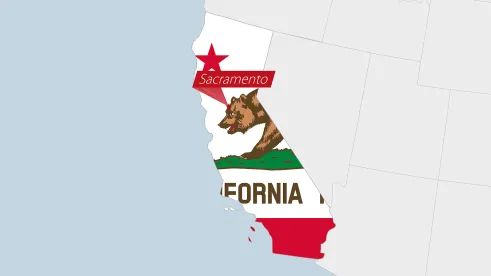The California Civil Rights Division (CRD) recently released updated guidance in the form of frequently asked questions (FAQs) for the 2022 California pay data reports, which covered employers must submit via the CRD’s pay data portal by May 10, 2023.
California’s pay data reporting law, originally enacted in 2020, requires private employers with one hundred or more employees to file annual pay data reports with the CRD. The law was amended in 2022 with the enactment of Senate Bill (SB) 1162. Among other requirements, the amended law obligates covered employers to report median and mean hourly rates within each job category, for each combination of race, ethnicity, and sex. The amended law also added a requirement to report data regarding workers employed through labor contractors.
These FAQs are the first opportunity for California employers to see how the state will implement the changes made by SB 1162. The new FAQs are posted to the CRD’s California Pay Data Reporting webpage. The expectation is that additional updated resources including an updated user guide will be posted on this page by February 1.
The new FAQs begin with a summary of the most important changes to this year’s pay data reporting. After this announcement section, the FAQs continue with defining a set of key terms and proceeds through several sections discussing the reporting process. These sections include the following:
- Introduction. This section explains the basis for the enactment of SB 973, which established the pay data reports, and the changes created by the recent passage of SB 1162 as well as explaining that employers’ pay data will not be made publicly available.
- Filing Deadline, Procedure, Certification, and Compliance. This section confirms the May 10, 2023, filing deadline for the 2022 pay data reports, and confirms that each covered employer is only required to file a single Payroll Employee Report and a single Labor Contractor Employee Report as applicable.
- Filing Requirements – Payroll Employee Reports. This extensive section covers many foundational issues for the Payroll Employee Reports, including how to determine the “snapshot period,” whether the filing jurisdictional threshold has been met, and which employees to include in the report.
- Filing Requirements – Labor Contractor Employee Reports. This section defines the terms “labor contractor employee” and “labor contractor” and explains this newly added filing requirement in detail. According to the FAQs, these reports essentially mirror the Payroll Employee Reports as to the data covered employers must provide to the CRD. The Labor Contractor Employee Report must include “each labor contractor employee’s establishment, job category, race/ethnicity, sex, pay band, and hours worked.” Because employers generally do not hold this information, this will require close cooperation with the employer’s labor contractors. Importantly, this section explains that employers must file this report if they had one hundred or more labor contractor employees inside and outside of California in the chosen snapshot period or “regularly” had one hundred or more labor contractor employees inside and outside of California during the reporting year. The FAQs define “regularly” as having one hundred or more labor contractor employees who “worked for the client employer on a regular basis during the Reporting Year.” To determine whether the one hundred-employee threshold is met, all labor contractor employees must be counted in the aggregate, even if supplied by more than one labor contractor. Provided this standard is met, the presence of a single labor contractor employee in California requires the employer to file the Labor Contractor Employee Report. This means that the threshold for filing these reports is quite low and essentially matches the demanding jurisdictional threshold for the Payroll Employee Report.
- Filing Requirements – Payroll Employee Reports and Labor Contractor Employee Reports. This section discusses many important aspects of the steps to prepare and present the reporting data to the CRD, including defining the term “establishment” and explaining how employees should be assigned to those establishments. This section also covers the ten reporting job categories, information regarding race/ethnicity and sex (including use of nonbinary gender), the updated pay bands, the continued use of Form W-2 Box 5 information (for wages and tips subject to Medicare tax), and total hours worked. The section ends with a discussion of the new requirement to provide median and mean hourly rates for each unique employee group with the same establishment, job category, race/ethnicity, and sex combination. The agency currently lists twenty-one possible combinations of race, ethnicity, and sex. This guidance includes the method for calculating the median and mean rates and where the rates should be reported.
- Professional Employer Organization (PEO) / Human Resource Outsourcing Organization (HRO). This portion of the FAQs describes the impact of PEOs and HROs on the report filing structure and their roles in filing reports on behalf of client employers.
- Acquisitions, Mergers, and Spinoffs. This section provides an overview of the jurisdictional impact of acquisitions, mergers, and spinoffs.
- Technical Issues. This final section provides tips for resolving technical issues, including reference to the California Pay Data Reporting Portal User Guide that still need to be updated for the 2022 reporting cycle.
Key Takeaways
The FAQs make it clear that employers may file a single Payroll Employee Report and a single Labor Contractor Employee Report containing information for all applicable locations and that separate reports need not be filed for each establishment. This contradicts language from SB 1162 Section 12999(c) suggesting that separate pay reports must be filed for each location. The jurisdictional threshold for filing a Labor Contractor Employee Report has been set quite low and will require any employer with one hundred or more labor contractors during the snapshot period nationwide and at least one labor contractor employee in California to file this report.
The depth of information needed to complete the Labor Contractor Employee Report will require active assistance of an employer’s labor contractors. The requirement to consider whether an employer regularly employed labor contractor employees during the reporting year means that employers must look beyond the end of year snapshot period to determine whether they are required to file the Labor Contractor Employee Report. While the regularly employed provision also applies to the Payroll Employee Report, this provision will likely pose more challenges for employers that must determine whether they “regularly” used one hundred or more labor contractor employees during the reporting year. At this point, employers may want to review their data and processes as part of the work to comply with these new reporting obligations. Employers may further want to review contracts and agreements with their labor contractors and staffing agencies in light of the new details available concerning the Labor Contractor Employee Report requirement.




 />i
/>i
